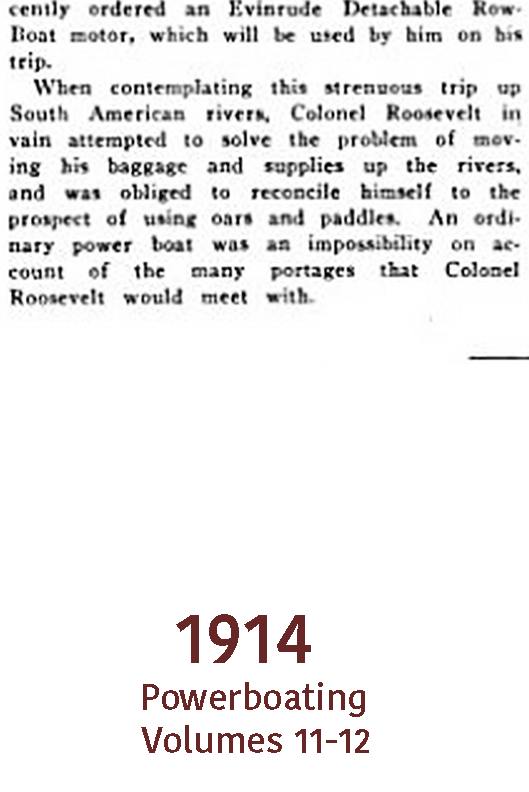













Great for the Bess Evinrude Ice Cream Run to the DQ!
I was looking for a photo of Roosevelt with his Evinrude (no luck) but read this in Wikipedia about the expedition. Shows you what happens when you don't have your outboard...
"Almost from the start, the expedition was fraught with problems. Insects and disease such as malaria weighed heavily on just about every member of the expedition, leaving them in a constant state of sickness, festering wounds and high fevers. The heavy dug-out canoes were unsuitable to the constant rapids and were often lost, requiring days to build new ones. The food provisions were ill-conceived forcing the team on starvation diets. Natives (the Cinta Larga) shadowed the expedition and were a constant source of concern—the Indians could have at any time wiped out the expedition and taken their valuable metal tools but they chose to let them pass (future expeditions in the 1920s were not so lucky).
Of the 19 men who went on the expedition, only 16 returned. One died by accidental drowning in rapids with his body never being recovered, one died by murder and was buried at the scene, and the murderer was left behind in the jungle, presumably swiftly perishing there.
By the time the expedition had made it only about one-quarter of the way down the river, they were physically exhausted and sick from starvation, disease and the constant labour of hauling canoes around rapids. Roosevelt himself was near death as a wounded leg had become infected and the party feared for his life each day. Luckily they came upon "rubber men" or "seringueiros", impoverished rubber-tappers who earned a marginal living from the forest trees driven by the new demand for rubber tires in the United States. The seringueiros helped the team down the rest of the river (less rapid-prone than the upper reaches). The expedition was reunited on April 26, 1914, with a Brazilian and American relief party that had been pre-arranged by Rondon to meet them at the confluence with the Aripuana river, where they had hoped to emerge from the tributary. Medical attention was given to Roosevelt as the group returned to Manaus. Three weeks later, a greatly weakened Roosevelt made it home to a hero's welcome in New York harbor. His health never fully recovered after the trip. He would live less than five more years.[1]"


No comments:
Post a Comment